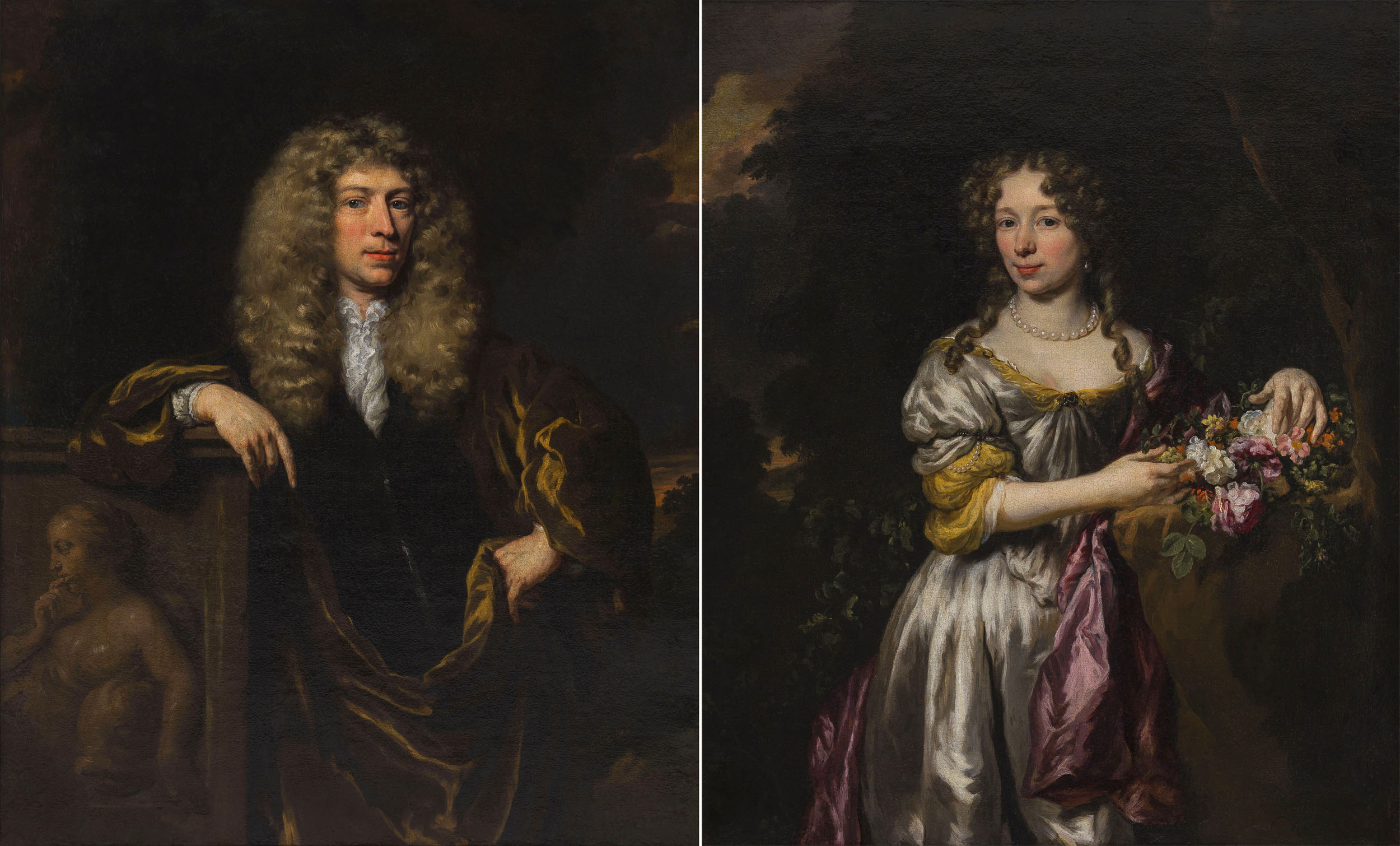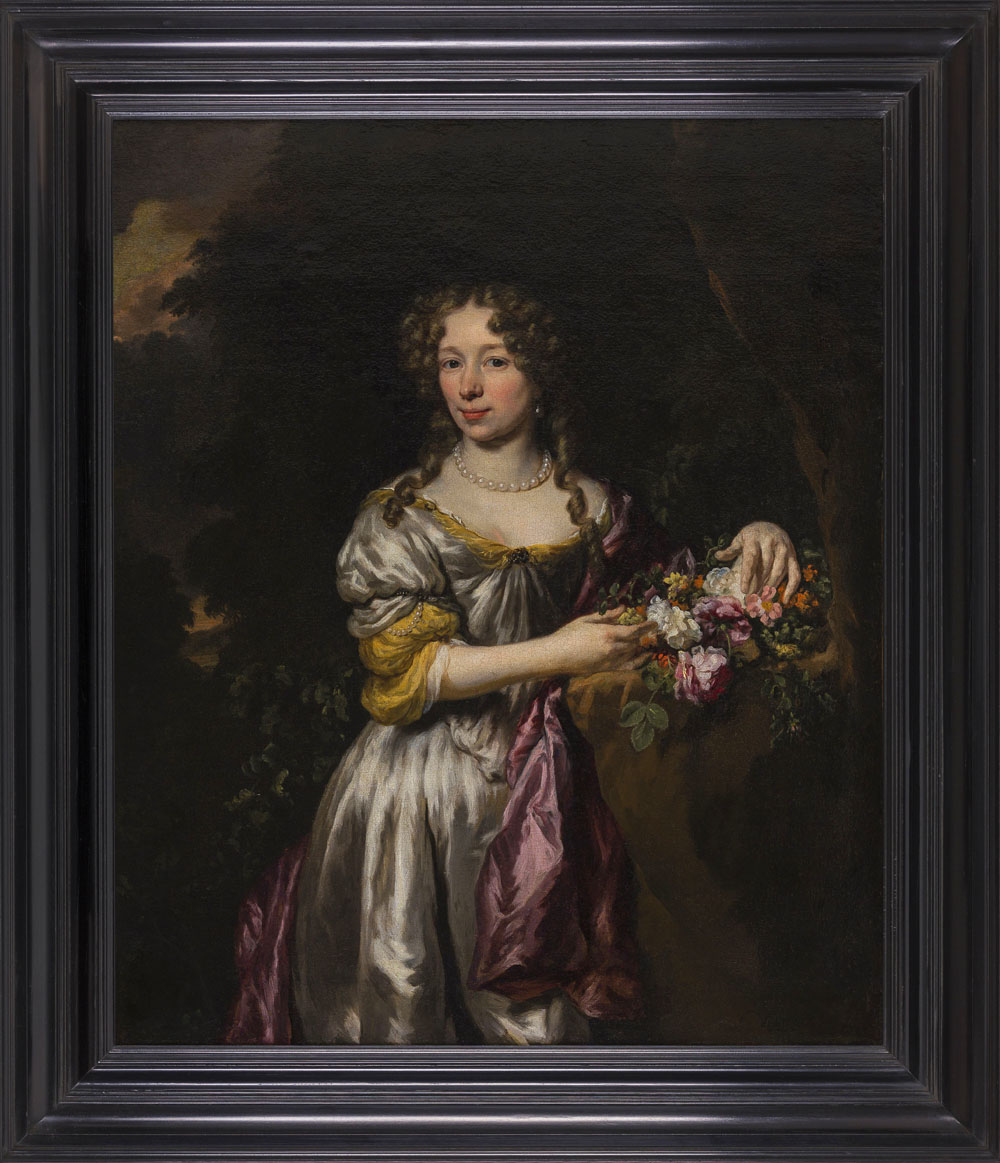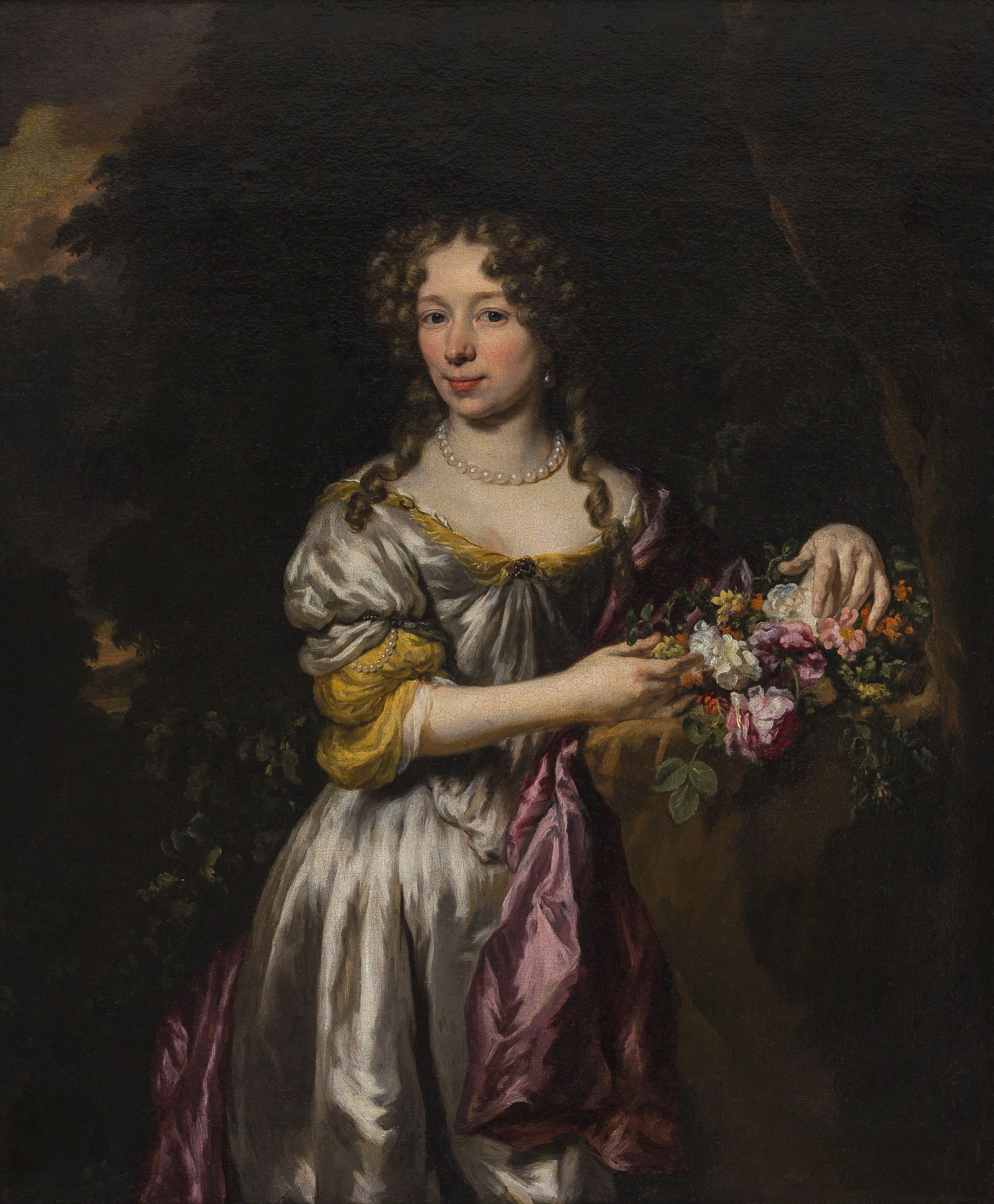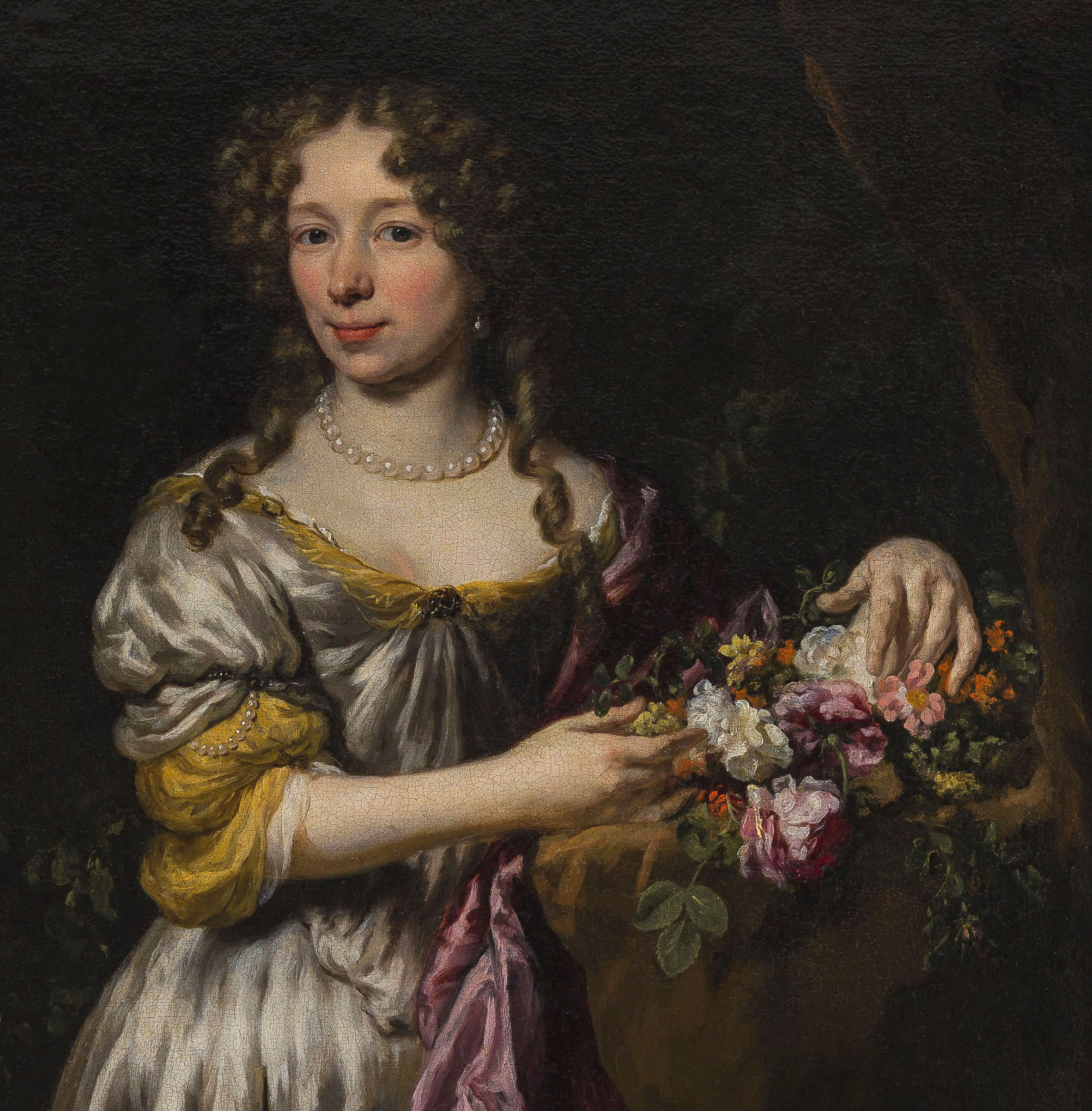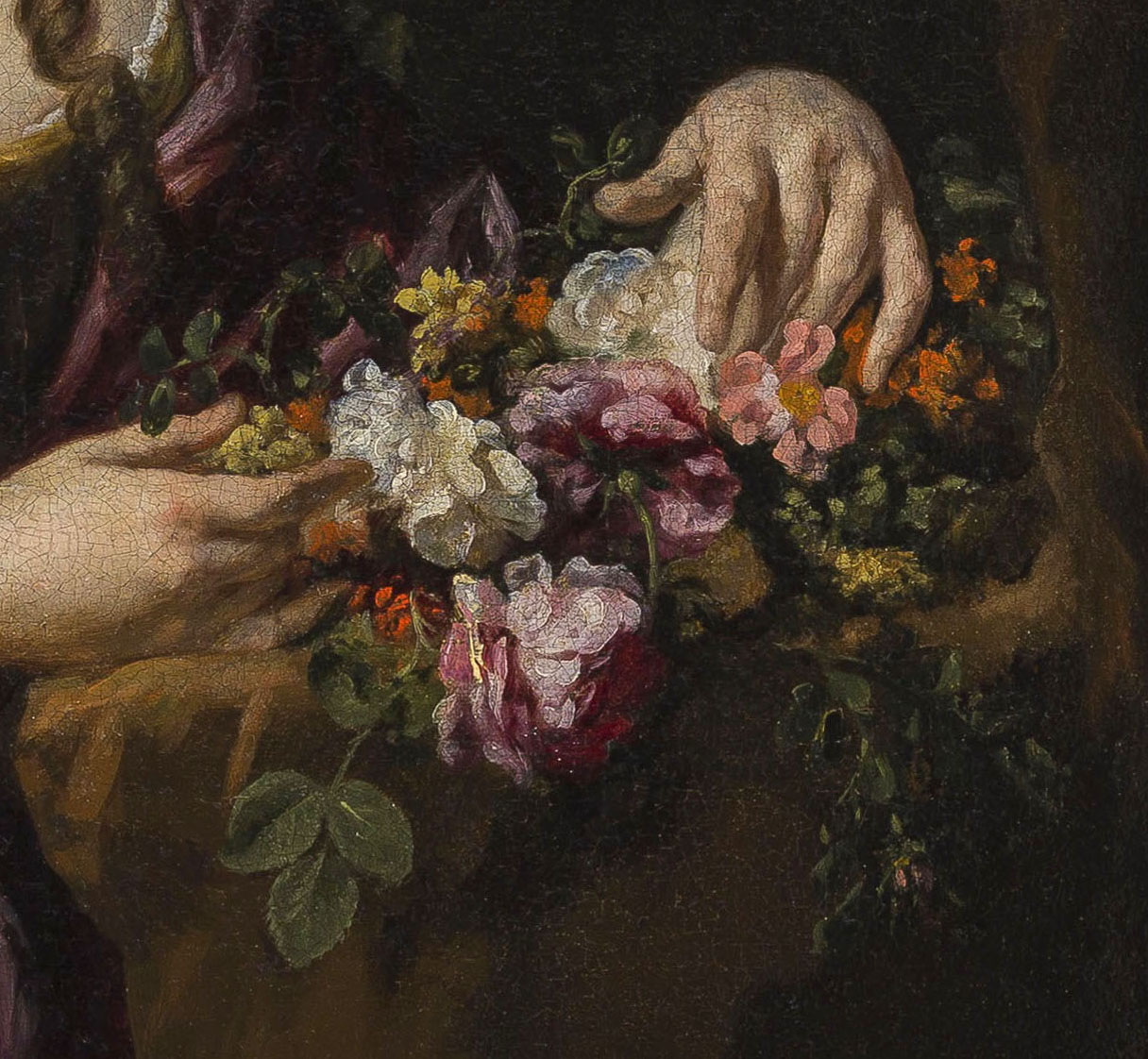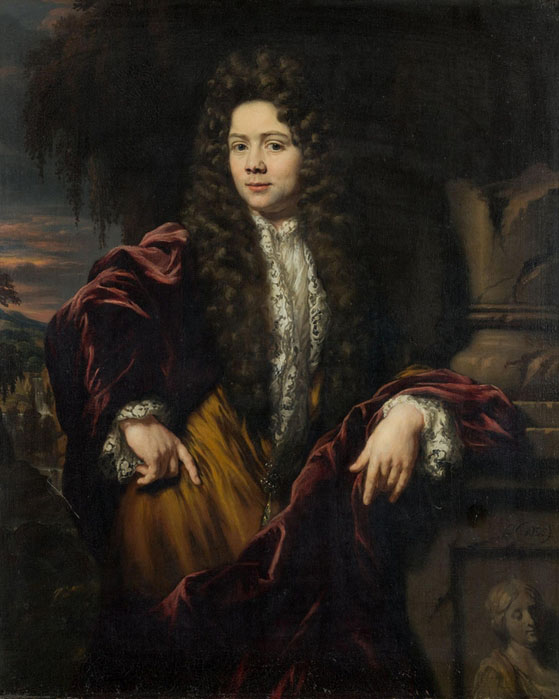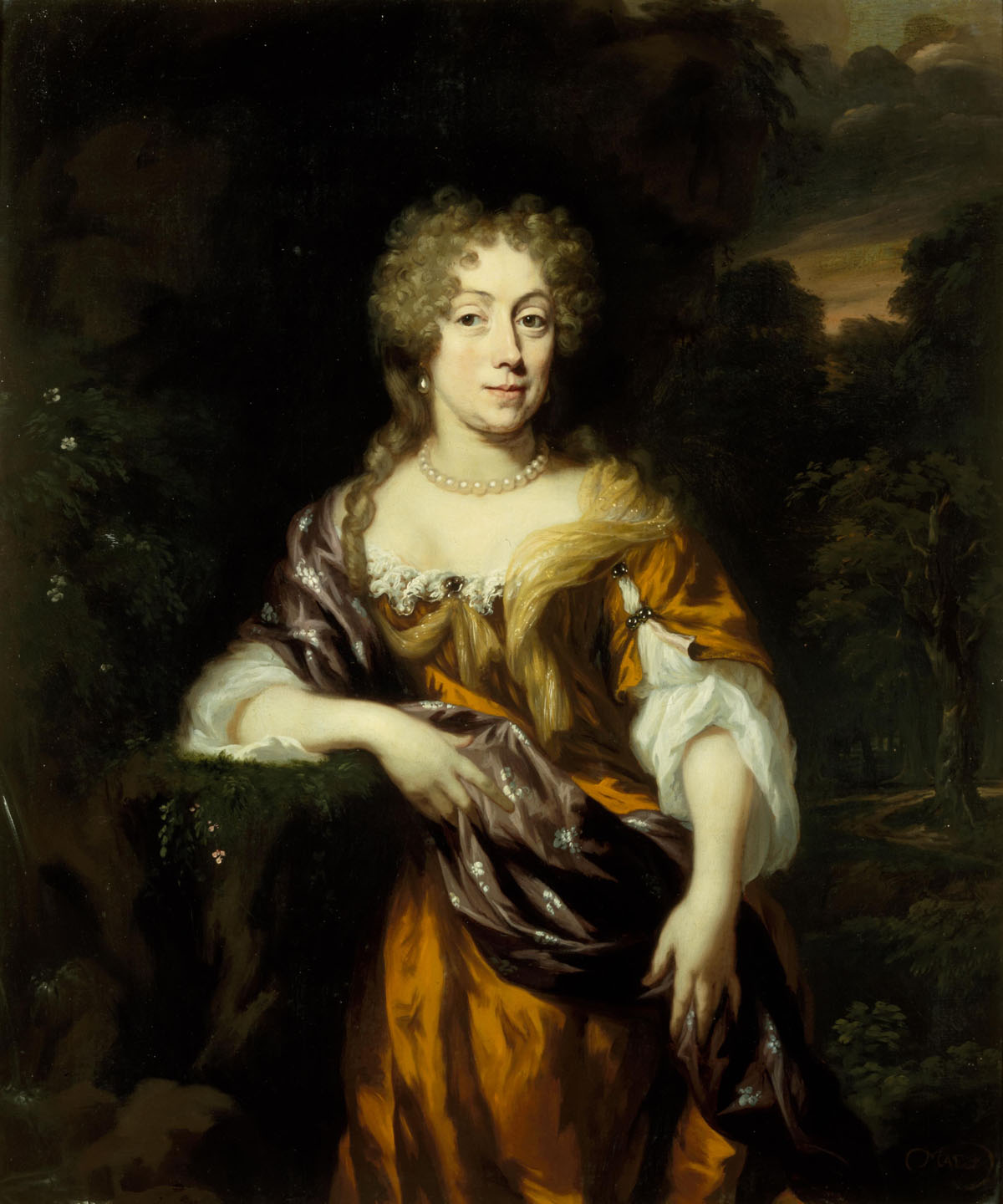NICOLAES MAES (Dordrecht 1634 – 1693 Amsterdam)
Nicolaes Maes (Dordrecht 1634 – 1693 Amsterdam)
A pair of Pendant Portraits
Oil on canvas, 69.8 x 57.1 cm (27.5 x 22.5 inch); presented in modern ebonised frames of 17th-century model
Both signed ‘Maes’ (lower left, lower right)
Provenance
Private collection, USA
***
This recently discovered exceptional pair of portraits is a notable addition to the oeuvre of Nicolaes Maes and his activity as a portraitist. One of Rembrandt’s most gifted pupils, he is praised for his originality and virtuosity, which can clearly be observed in these two outstanding portraits.
Nicolaes Maes learned to draw from a local Dordrecht master and around the age of fifteen moved to Amsterdam, where he entered the studio of Rembrandt van Rijn, being taught by the great master for several years, probably between about 1648 and 1653.1 Subsequently, he returned home to embark on an independent career. By the 1650s he had developed a reputation for painting the intimate life of women and children; his finest pictures capture aspects of Rembrandt’s tenderness and intimacy. Maes’s scenes often include vignettes such as a cat stealing the dinner of an old woman as she prays. By representing an interior as a suite of rooms rather than a three-wall, one-room enclosure, Maes had great impact on the Delft painters Johannes Vermeer and Pieter de Hooch. Maes moved from Dordrecht to Amsterdam in 1674 to attract a larger clientele, and remained there for the rest of his life.
About 1660 Maes began specialising in portraits, becoming wildly successful by abandoning his Rembrandtesque style for the bright colours and studied elegance of Flemish artists such as Anthony van Dyck. Arnold Houbraken’s 1721 biography described the transformation: Maes “learned the art of painting from Rembrandt but lost that way of painting early, particularly when he took up portraiture and discovered that young ladies preferred white to brown.” In doing so, he became so successful with the elite of Amsterdam that, “so much work came his way that it was deemed a favor if one person was granted the opportunity to sit for his portrait before another, and so it remained for the rest of his life”, again in the words of Houbraken.2
The present pair of paintings have remained together since they were first created, but sadly the identity of their subjects has been lost to time, as is often the case. They were painted circa 1675-1680, when Maes was settled in Amsterdam, and are larger than the format that the artist frequently used for his portraits during this period, attesting to the prosperity of the sitters. The gentleman, standing in an Italianate evening landscape, leans casually on a Classical relief, suggesting a life of travel and erudition. Of handsome features, he wears an ochre-coloured ‘Japonsche rock’, generally worn indoors. Maes has painted its folds with his usual ease and spontaneity, while the long flowing hair is also masterly handled. The female counterpart is of a particularly young and attractive woman, wearing a dress of white and yellow silk and a scarlet shawl. Like her husband, she is also standing in an Italianate landscape and holds a bouquet of flowers, another highly attractive detail, beautifully painted by Maes. She illustrates clearly the remark by Houbraken that the elegant ladies of Amsterdam preferred white to brown.
It is comparatively rare for pendant portraits by Maes to have remained together. This well preserved, rare and particularly handsome pair can for instance be compared to the portraits of Willem Cornelisz Backer (1656–1731) and Magdalena de la Court (1661–1712), in the Willet-Holthuysen Museum in Amsterdam (fig.).3 The Backers were among the most notable families of Amsterdam during the Golden Age. The portraits in the Willet-Holthuysen museum are virtually identical in size to our paintings, and interestingly the male sitter is also shown leaning on a bas relief, similar to the sculpture in our work. This motif is also encountered in the portrait of Jacob Martens (1636 – 1693) of 1680 in the Centraal Museum in Utrecht, which also holds the portrait of his wife, Aletta Pater (1641–1725) (fig.).4
An example of the more frequently used smaller canvas size are the portraits of Admiral Jacob Binkes and his betrothed Ingena Rotterdam of 1676 in the Metropolitan Museum in New York.5
1.For the artist, see León Krempel, Studien zu den datierten Gemälden des Nicolaes Maes (1634–1693), Petersberg 2000 and Ariane van Suchtelen a.o., Nicolaes Maes, exh. cat. Mauritshuis, The Hague 2019.
2. Arnold Houbraken, De groote schouburgh der Nederlantsche konstschilders en schilderessen, vol. II, The Hague, 1719, p. 275.
3. Both oil on canvas, 69 x 57 cm, signed ‘Maes’; in the collection of the Backer Stichting, on loan to the Willet-Holthuysen Museum, Amsterdam; Norbert Middelkoop, Kopstukken: Amsterdammers geportretteerd 1600-1800, exh. cat. Amsterdam (Amsterdams Historisch Museum) 2002-03, p. 260, cat. no. 111a and 111b.
4. Both oil on canvas, 69.6 x 58.3 cm, inv. no. 8395a; L. Helmus, Centraal Museum, Utrecht. Schilderkunst tot 1850, Utrecht 1999, vol. II, pp. 1090-93, cat. no. 323.
5. Both oil on canvas, 43.8 x 33 cm; signed and dated 1676; inv. nos. 11.149.2 and 11.149.3; formerly in the collection of J. Pierpont Morgan, presented to the museum in 1911; Walter Liedtke, Dutch Paintings in The Metropolitan Museum of Art, New York, 2007, vol. 1, pp. 446–49, no. 114, colour pl. 114.
